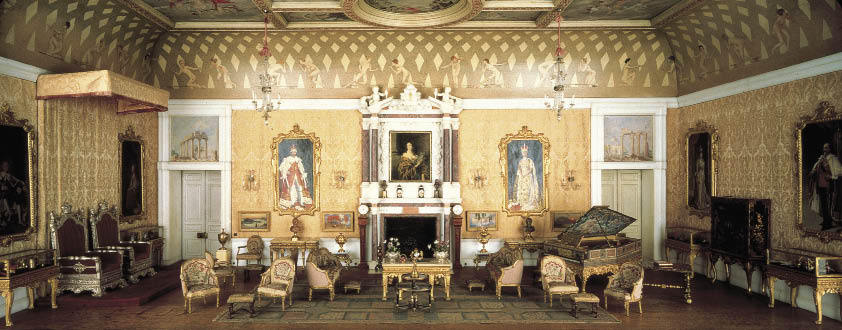There’s nothing like a really good wallow in nostalgia.
There’s nothing like a really good wallow in nostalgia. And if it can be arranged so that the nostalgia is for a time that never was, that’s even better. So it is hardly surprising that when, after the horrors of the first world war, Princess Marie Louise, Queen Victoria’s granddaughter, approached Sir Edwin Lutyens to design a dolls’ house for Queen Mary, they settled stylistically on creating a house firmly rooted in that semi- mythical long Edwardian pre-war summer, when God was clearly an Englishman, his home was his (miniature) castle, and his servants were, decently, not only omnipresent but also invisible. It is this invisibility, ultimately, that makes dolls’ houses so wonderful: they become a blank slate, a world empty of mess, of history, of emotion, of trauma.
The idea of a dolls’ house for a grown woman was odd, but Lutyens was no stranger to eccentricity. On visiting Simla in 1912, he had commented:
If one was told that the monkeys had built it all, one could only say, ‘What wonderful monkeys — and they must be shot, in case they do it again.’
Similarly, Queen Mary’s dolls’ house is a magical world, but one would not like it done again, created as it was out of a mindset of obsequiousness and hierarchy of birth over merit that has, thankfully, all but passed away. Not, of course, that one would know any of this from Lucinda Lambton’s delightful romp around the miniature world at Windsor, published as it is by the Royal Collections.
As the National Trust has found out in their full-sized properties, the rooms that people like most are not the great reception rooms, the stately-home stage-sets, but the ‘real’, the places which we can in our imaginations, more or less, transport to our own lives: the bathrooms, the kitchen, the pantry. And this is the joy of the Queen’s dolls’ house: the housemaid’s cupboard with its tin of Vim, its box of Lux flakes; the WC with its dish of Bromo paper; the linen cupboard with piles of sheets and towels, wicker laundry-hampers, and neat sewing- materials, complete with reels of Clark’s cotton (how Alan Clark would have hated to have been reminded of his ‘trade’ origins). The garage and wine stores are, I’m sure, an equal delight, with their crates of claret and port, and the ‘real’ engines that permit the toy Daimlers and Rudge motorcycles to run, although these pleasures pass me by.
But this is the joy of miniature worlds: we can all find our reflected interests. The technologically minded can ogle the ‘Wireless Cabinet Receiver’ set, or the wind-up gramophone, or the ‘Kodachromes’ carefully pasted into an album; children at heart can dream over the functioning toy steam-train, or the lead soldiers, or the theatre, complete with Peter Pan set — a celebration of Lutyens’s long friendship with the author, James Barrie.
Ultimately, the dolls’ house is for anyone who has a part of them that is unwilling to grow up; and of course that means, it’s for all of us. Even the republicans.





Comments